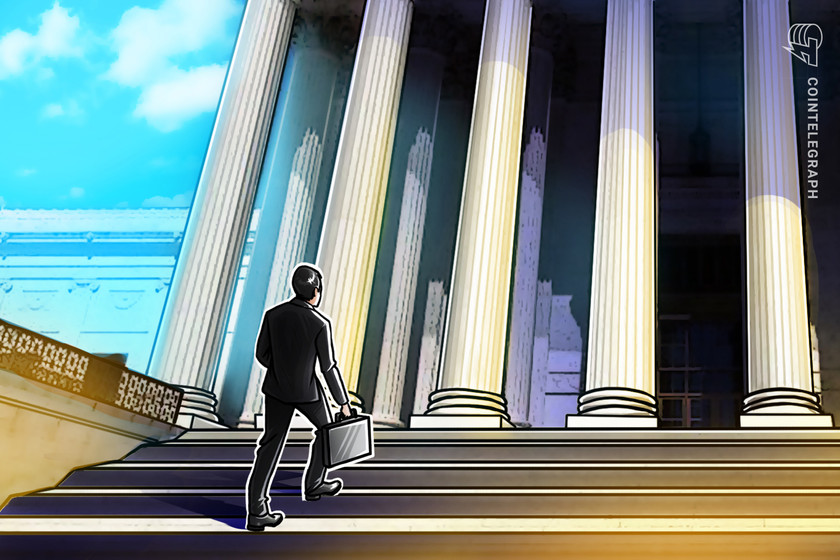Crypto-friendly banks mismanaged traditional risks, FDIC head tells Senate hearing

It all started with FTX, FDIC head Martin Gruenberg said; he emphasized that the American banking system remains sound.
The United States Senate Banking Committee held a hearing March 28 on the regulatory response to recent bank failures. Officials from the Federal Deposit Insurance Corporation (FDIC), Federal Reserve and Treasury testified. FDIC chair Martin Gruenberg spoke about the causes of the failures of Silicon Valley Bank (SVB) and Signature Bank, including the role of digital assets, and the agency’s responses to the crisis.
High levels of uninsured deposits and rapid growth were common factors in the bank collapses in March, Gruenberg said. Gruenberg’s narrative began with the closing of digital-asset-focused Silvergate Bank, announced on March 8, although that story began with the bankruptcy of FTX.
FTX represented less than 10% of Silvergate Bank’s total deposits, but the bank lost 68% of its deposits in the aftermath of FTX’s bankruptcy, setting off a fatal chain of events for the bank. Gruenberg said:
“The troubles experienced by Silvergate Bank demonstrated how traditional banking risks, […] When not managed adequately, could combine to lead to a bad outcome.”
FDIC was informed of the run on SVB on the evening of Thursday, March 9. SVB closed on March 10 and FDIC worked with the bank throughout the weekend, succeeding in reopening the bridge bank the following Monday. Gruenberg noted that, like Silvergate Bank, SVB had concentrated its activities in a single sector — venture capital firms.
Related: Adoption and nerves — Crypto pumps amid banking crisis
Signature Bank was more diversified than Silvergate Bank or SVB. That was partly because of the bank’s decision to reduce its exposure to digital assets after the FTX bankruptcy and media scrutiny of the bank’s ties to the crypto exchange. The bank received more negative attention related to FTX in February, when it was sued for allegedly facilitating FTX’s commingling of accounts.
Deposit outflows from Signature Bank began March 9 and became acute the following day, Friday, with about 20% of deposits being withdrawn in hours. Management was unable to provide accurate financial data and the situation deteriorated:
“Resolution of the negative balance required a prolonged joint effort among Signature Bank, regulators, and the Federal Home Loan Bank of New York to pledge collateral and obtain the necessary funding from the Federal Reserve’s Discount Window to cover the negative outflows.”
„This was accomplished with minutes to spare before the Federal Reserve’s wire room closed,” Gruenberg added.
Gruenberg noted that Silvergate Bank and Signature Bank used digital platforms that made it possible to carry out transactions round-the-clock. They were “the only two known platforms of this type within U.S. insured institutions.”
Sen. Warren and FDIC Chair Martin Gruenberg exchange some words before we get underway at today’s regulatory oversight hearing, starting now. Follow along!! pic.twitter.com/Tzw14NH3Os
— Brendan Pedersen (@BrendanPedersen) March 28, 2023
Gruenberg gave a preliminary estimate of $22.5 billion for the cost to the Deposit Insurance Fund for resolving SVB and Signature Bank losses. He added, echoing several government officials in recent days, that:
“The state of the U.S. financial system remains sound despite recent events.”
FDIC will release a comprehensive report on the deposit insurance system; FDIC’s chief risk officer will release a report on the corporation’s supervision of Signature Bank by May 1. In addition, FDIC will issue a proposal on new rulemaking on the special assessment that month.
The other speakers at the hearing gave briefer testimony. Treasury Under Secretary for Domestic Finance Nellie Liang described how the Treasury engaged with FDIC and the Federal Reserve during the bank failures. Fed Vice Chair for Supervision Michael S. Barr discussed in fairly technical terms the failure of SVB and the subsequent steps taken by the government.
Magazine: Can you trust crypto exchanges after the collapse of FTX?

